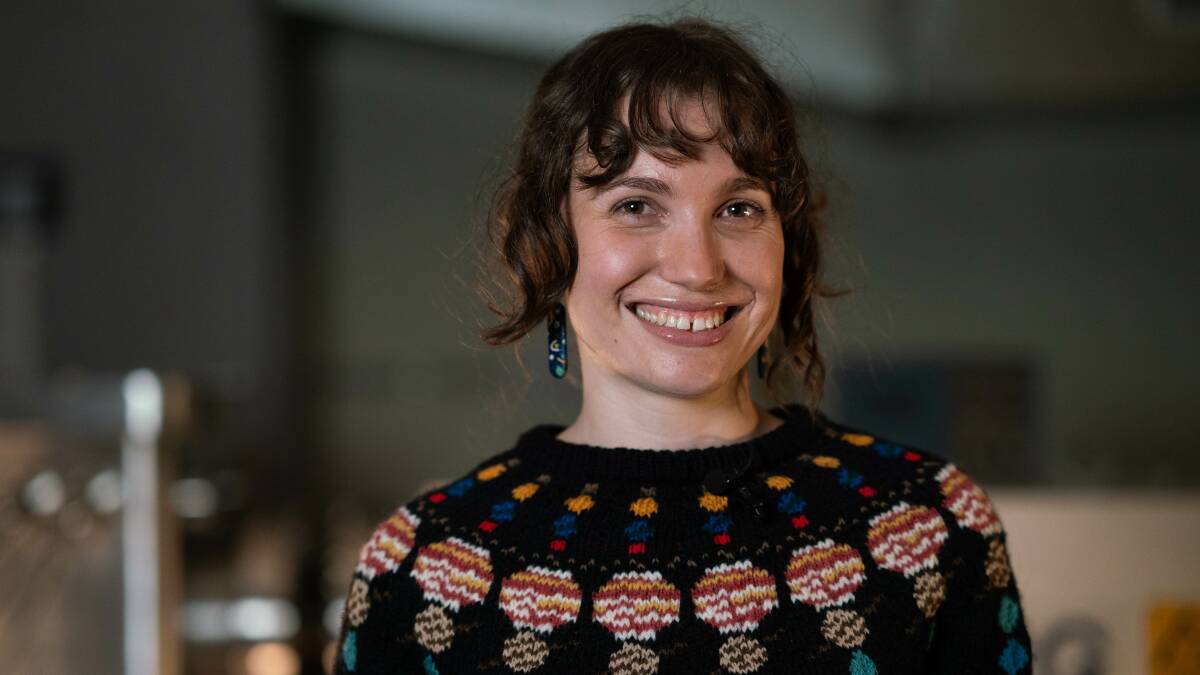
In between the memes and dog photos my friend and I send each other, are a slew of progress photos of the knitted toys he makes for nieces and nephews.
Subscribe now for unlimited access.
or signup to continue reading
What started as a pandemic skill that lasted long after all the lockdowns had lifted, now has him knitting on a near-daily basis, trying to get through the long list of requests the children in his life have sent him. And with each new progress shot, it's hard not to feel like you're privy to a magician's secret as you watch these pieces of wool transform into 3D objects.
But in between queries of "Is this the right shade for Emma Wiggle's hair?" and "What angle should the antlers be?" I can't help but think about how there was a time, not too long ago, when many would have said that the end was nigh for the hobby of knitting.
It wasn't considered the "cool thing" to do. It was something your nanna did while watching reruns of Murder She Wrote. Maybe she gave you a couple of lessons one rainy Sunday afternoon. Maybe you even made a couple of scarves because of it. But it never really made it beyond that. Until recently.
For Canberra's Rachel Kirby knitting was a skill that was passed from her grandmother to her mother, and then to her. But rather than it being a temporary hobby that lasts the length of time it takes to make a scarf or two, it was something that stuck.
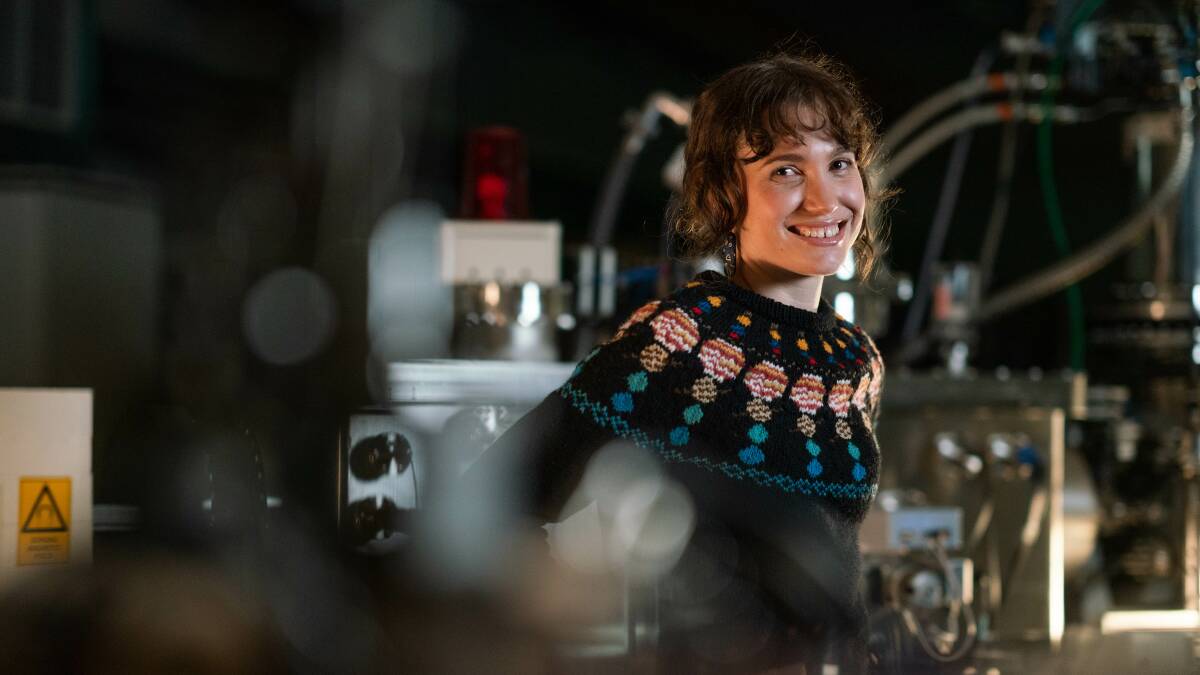
Now a mother with her own children, sewing is Kirby's "me-time" - whether that be after the kids go to bed, or while she's sitting at the park as her children play on the playground. But it's her other hat that has inspired her latest woollen creation - and spoiler alert, it's out of this world.
Kirby is studying planetary geology and cosmochemistry at the Australian National University Research School of Earth Sciences. And as part of her PhD, she is studying a special type of iron meteorite found on Earth.
As a way of combining her love of both knitting and space, Kirby recently finished making an Icelandic-style jumper which she designed to include the solar system in a pattern around the neckline.
Along with lining up the eight planets and repeating them 16 times around the neck of the jumper - making it look almost like a string of Christmas tree finials circling the collar - it also includes both the Asteroid Belt and the Kuiper Belt. There is some bad news for all those Pluto fans, however - its demotion to dwarf planet means it doesn't get a mention in Kirby's design.
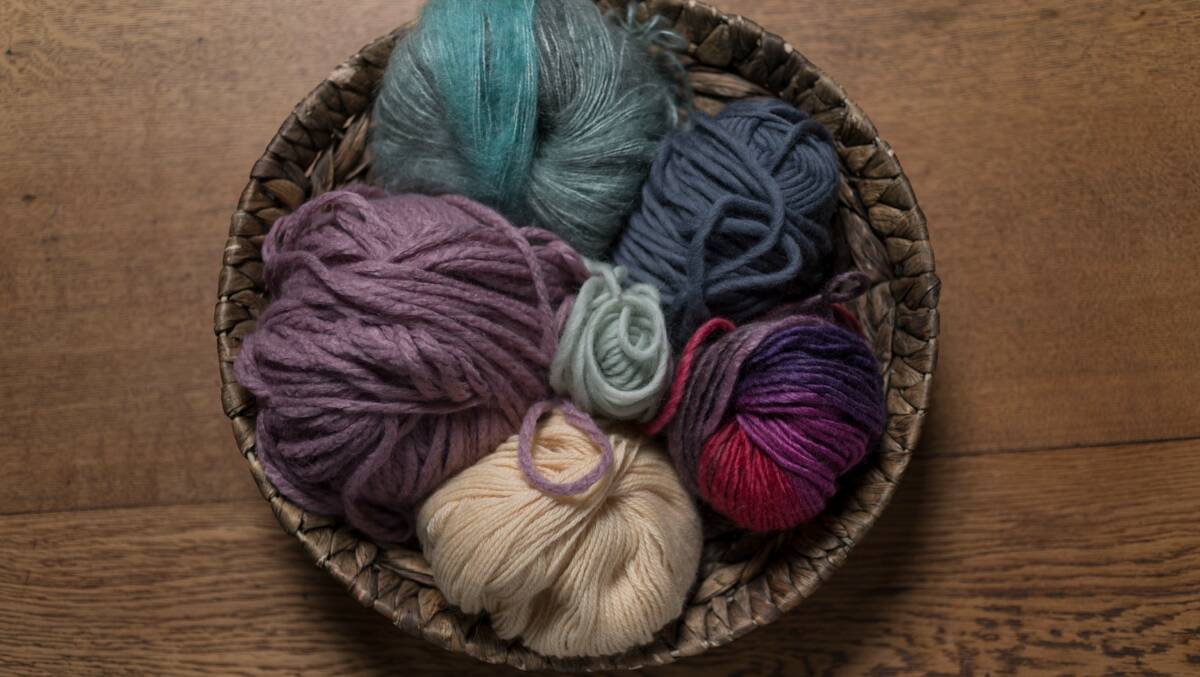
"There's a bit of controversy around that one, but Pluto is actually a Kuiper Belt object. So it is there but there are quite a few dwarf planets out there in the Kuiper Belt," Kirby says.
"But I knew I wanted the Asteroid Belt and the Kuiper Belt because that's where a lot of our rocks/meteorites come from. They come from the Asteroid Belt. So it's really important for me, given that that's what I study, that they were there."
Kirby has made her fair share of jumpers before, but this was the first time the knitter decided to try her hand at designing her own. And not only was it a roaring success in that it fits - because let's face it, you can reach the end of a knitting project to find that it doesn't - but when she posted it on her knitting and sewing Instagram account, @fibre.and.space and her PhD-focused Twitter account, @GeoPlaneteer, she was flooded with comments.
But the thing is, as successful as this solar system jumper was, it was still just a practice round for Kirby.
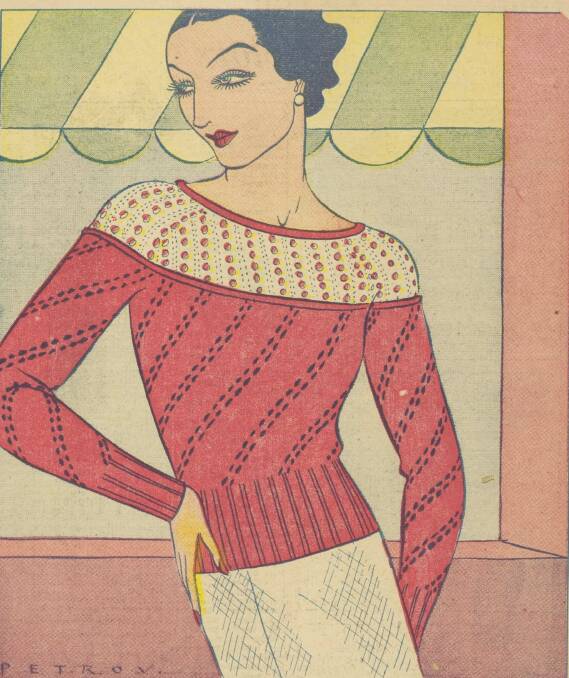
"I'm in the process of hopefully having my first research paper published in a journal. But I designed a jumper based on that research so I'm hoping that they come out at the same time," Kirby says.
"That's the one I always wanted to knit, and I just wanted to not stuff it up. I wanted to make sure I could wear it.
"My paper looks at how a special type of meteorite forms, a type of iron meteorite. And I have come up with the hypothesis that it formed when two asteroids collided - so there was a big impact on an asteroid and it melted the rocks.
"So the design has a fireball coming in to represent the asteroid, it has an impact crater, and it has patterns to represent melting of that rock."
It seems that Kirby is on the front foot when it comes to the rise of knitting, and the slow movement in general. While she has been knitting her whole life, one of the first indications that the rest of the world had started to get on board with the pastime was in 2005, when the first worldwide Knit in Public Day was held.
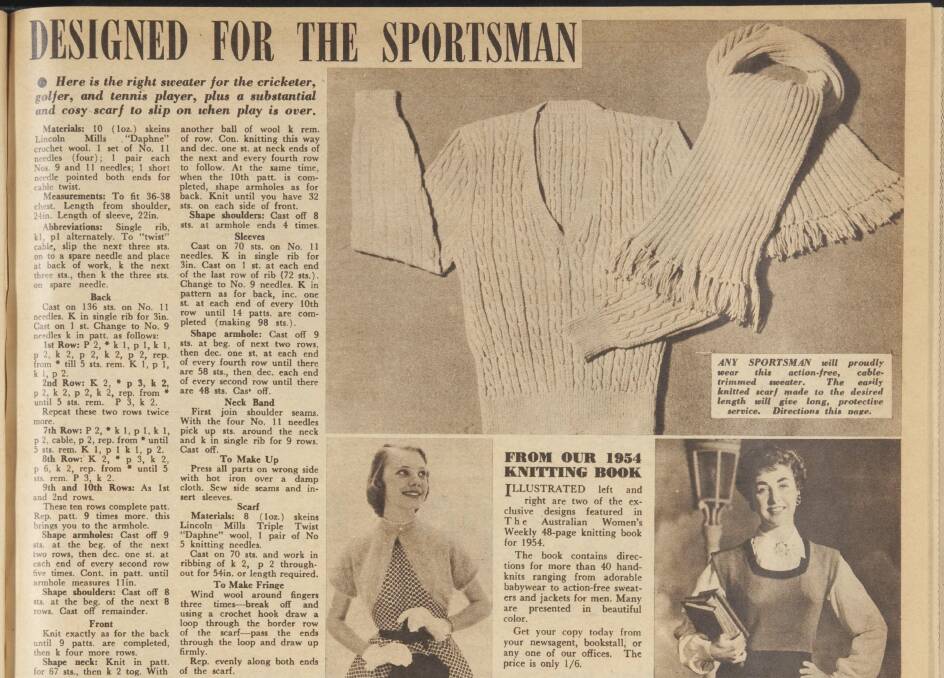
This was the beginning of what has been dubbed the Handmade Revolution, which was spurred on by social media. One of the more wholesome things to come out of social media was this ability for people to share information and patterns easily and readily about knitting.
And, as with any trend, if a popular person is seen taking part - either online or in traditional media - the more attention the trend gets. In this case, the famous faces include actors Nicole Kidman, Meryl Streep, and Julia Roberts, as has the Duchess of Cambridge and New Zealand singer Lorde. And who could forget British diver Tom Daley who's knitting at the 2021 Olympics got just as much - if not more attention - than his gold medal did. He even made an adorable little sweater for said medal.
This uptick in popularity over the years was also noticed by the National Library of Australia, with more and more people accessing its online collection of newspaper and magazine collections, Trove, for vintage knitting patterns. In fact, the system's most common search is for vintage knitting patterns, which in the early decades of the 20th century were regularly published in newspapers and magazines. There was such an uptick in searches that the library saw an opportunity for a book.
Vintage Knits is a curated collection of some of the patterns from Australian publications in the 1930s, 40s and 50s, all of which have been tested and updated to make them practical for today's knitter. As it turns out, a knitting pattern from the 1930s is not always feasible for a knitter in 2022 to use - for all sorts of reasons.
MUST READS:
"Our body shapes have changed for one - we're generally taller and wider than people were 50, 60, 70 years ago," National Library of Australia's director of publications Kathryn Favelle says.
"This meant, as we were knitting up the patterns, we were having to experiment with size, with the wool that we were using, because the wools that were available through the 30s and 40s aren't available now - so is there similar wool that produces similar result?
"There was a lot of experimentation to translate the patterns for a modern knitter. And we were blessed that our volunteer community, including some of our staff, but also our National Library volunteers, were keen to get on board and experiment with us and do the hard work of adapting the patterns so that we can knit them up today."
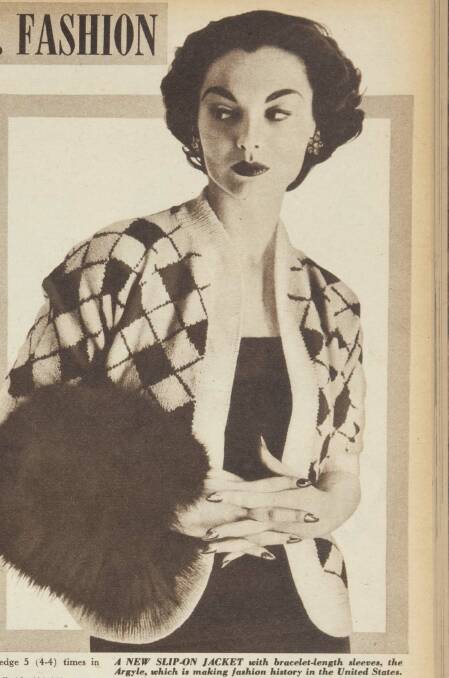
There was even the issue of the fact that knitting patterns printed in publications only came in one size. Not because it was a one-size-fits-most design, but because it was expected that the reader would know how to size up or size down their creation to suit their own measurements.
That assumption was just a fact of life back then. You weren't able to buy a jumper or cardigan from the store so you - or should I say, women - were expected to know not only to knit but adapt a pattern for your own needs. And these needs - as with most things - could be influenced by external factors.
Take the Margaret pattern in Vintage Knits, for example. Originally printed in the Argus in 1936 by a woman called Margaret Eaton, the pattern was a response to a request for an alternative to silk blouses during the Great Depression.
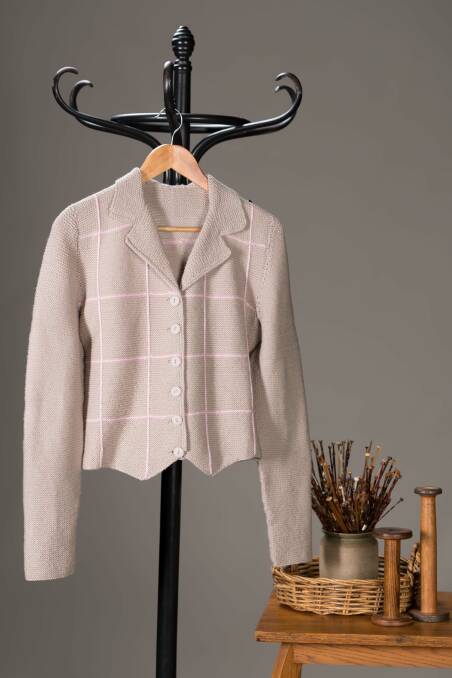
"This was a knitted garment that looked a bit like a blouse in a time when they couldn't buy silk blouses or new blouses," Favelle says.
"They could pull apart an old sweater and reuse the wool to create something similar.
"The other thing that I love about it is that it's so simple. It's just your basic garter stitch, which is the first stitch that we all learn as knitters. And it's just using that one basic stitch but creating something that looks quite smart that a woman could have worn to work or out to church or doing her shopping in that crazy interwar period that we went through."
The Margaret is also the only pattern in Vintage Knits that has credit to its designer. And aside from her name - which was published alongside the pattern, which was a rarity in itself - the National Library doesn't know much more about her.
The reality is that there were plenty of women submitting patterns to be published in publications and even more who were employed as pattern makers for companies such as Patons, to create and test out the designs. But other than that, it's this near-invisible part of history that Favelle says is ripe for any social historian to get into.
- Vintage Knits, by the National Library of Australia. NLA Publishing. $39.99.
We've made it a whole lot easier for you to have your say. Our new comment platform requires only one log-in to access articles and to join the discussion on The Canberra Times website. Find out how to register so you can enjoy civil, friendly and engaging discussions. See our moderation policy here.
Our journalists work hard to provide local, up-to-date news to the community. This is how you can continue to access our trusted content:
- Bookmark canberratimes.com.au
- Download our app
- Make sure you are signed up for our breaking and regular headlines newsletters
- Follow us on Twitter
- Follow us on Instagram


